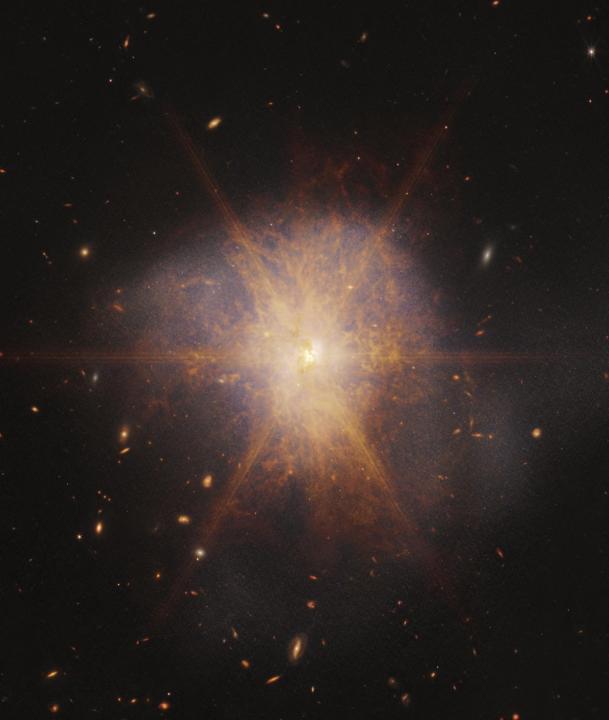The James Webb Space Telescope has captured a gorgeous image of a dramatic cosmic event: two galaxies colliding. The two spiral galaxies are in the process of merging, and are glowing brightly in the infrared wavelength in which James Webb operates, shining with the light of more than a trillion suns.
It is not uncommon for two (or more) galaxies to collide and merge, but the two pictured in this image are giving off particularly bright infrared light. The pair has a combined name, Arp 220, as they appear as a single object when viewed from Earth. Known as an ultraluminous infrared galaxy (ULIRG), Arp 220 glows far more brightly than a typical spiral galaxy like our Milky Way.

Arp 220 is located 250 million light-years away, but its bright glow means that Webb was able to capture the object using its Near-Infrared Camera (NIRCam) and Mid-Infrared Instrument (MIRI). By combing data from these two instruments, scientists are able to see the object in both the near-infrared and mid-infrared wavelengths.
While the process of galaxies colliding can be destructive, it can also create many new stars — as it has in this case. “The collision of the two spiral galaxies began about 700 million years ago,” Webb scientists write. “It sparked an enormous burst of star formation. About 200 huge star clusters reside in a packed, dusty region about 5,000 light-years across (about 5 percent of the Milky Way’s diameter). The amount of gas in this tiny region is equal to all of the gas in the entire Milky Way galaxy.”
Arp 220 was previously imaged by the Hubble Space Telescope in 2008. Comparing the two images shows not only the differences when observing in different wavelengths, as Hubble looks in the visible light portion of the spectrum compared to Webb’s infrared, but it also shows how much more detail is visible thanks to advances in technology over the last 15 years.
Another difference is in the distinctive diffraction spikes that are a signature of a James Webb image: the six-pointed star shape is caused by the telescope’s hexagonal primary mirror.



